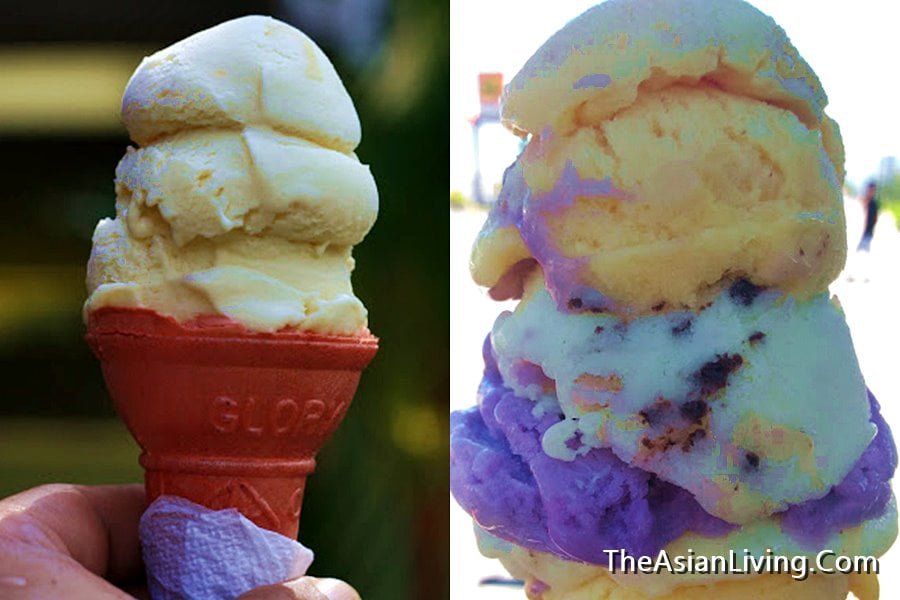
Street Foods in the Philippines
Table of Contents
The World of Philippine Street Foods
The world we live in is divided into several nations. Each of them comprises of various races that possess unique cultural qualities. History has been around as time goes on. They indeed tell a rich and insightful tale in their bloodlines. People learned to communicate through language and inculcated their traditions. These are indeed different when compared from one nation to another. Even regional factions have their differences. One of the cultural aspects that nations and regions use as an interconnecting link to one another is the cuisine. The Filipino cuisine, particularly, has a lot to bargain in terms of its cultural contributions.

Street Foods in the Philippines
Overview of Philippine Street Foods
The love for the food of the Philippines is incomparable. Although Filipinos have three large meals (all consisting of a cup of rice at least), they also enjoy taking several snacks. The Philippines is a big fan of handy snacks to bring anytime and anywhere. There have been a significant number of street snacks— some sweet, some salty, and some very odd.
Filipinos are innately resourceful, and therefore they find unusual ways to put food on the table and try to prevent a healthy intestine cord or ears from being thrown away. This may be why we are known for exotic delicacies such as duck embryos and pig and chicken inner organs. Let us take a look at some of the most popular Philippine street foods.

Popular Street Foods in the Philippines
1. Kikiam – A cheaper variant of Japanese tempura, this snack shares a similar recipe as a fish ball, but it is extended with spiked tips instead of round. It is deep-fried until golden-brown and dipped into a variety of sauces. The sauces can be sweet and sour, spicy-sweet, or red vinegar with onion.
2. Balut – The most exotic street food in the Philippines–balut. Balut is a duck embryo that is incubated for at least two weeks and boiled. Balut is said to be high in protein and can be an aphrodisiac. To eat the balut, smash the round side of the egg and drink the moist, delicious soup inside. Enhance the taste with salt, vinegar, and some chilies.

Street Foods in the Philippines
3. Banana-cue – It’s a favorite daily snack in the Philippines. A local banana, known as “saba,” is covered in brown sugar, crushed in oil, and skewered on a barbeque stick. Besides bananas, camote cue is available. Instead of bananas, sweet potatoes are used and cooked in the same process.
4. Sorbetes (Dirty Ice Cream) – These Filipino soft served are not dirty. The name was invented by the suspicious appearance of the ice cream vendors’ carts. Sorbetes have delightful flavors such as purple yam, berries, and cheese. This is the perfect, budget-friendly snack for a hot day.

Street Foods in the Philippines
5. Kwek-kwek – You may misjudge this as Dunkin Donuts’ munchkins at first glance. Kwek-Kwek are hard-boiled, orange battered, and deep-fried quail eggs. Tokneneng is a larger variant, and it uses chicken eggs.
6. Fish balls – It is a round, deep-fried fish dough in a wok. Sellers usually toss their fish balls into sweet or spicy sauces, using barbecue sticks.

Street Foods in the Philippines
7. Buko juice – The Philippines is a tropical country blessed with a lot of coconuts. Street vendors slice and serve the top part of the coconut shell. You can ask the seller to give you the husk of the coconut to scrap the juicy flesh after you drink its juice.
8. Taho – Taho is often hawked by traders who travel by foot and keep two full aluminum buckets on their shoulders by raising a long stick as they shout, “Tahooo!” This street food is a cup of bean curd mixed with caramelized brown sugar syrup accompanied by small tapioca balls known as “sago.” In the Northern part of the Philippines, particularly Baguio, they have a special strawberry taho. This snack is said to have been adopted by the Philippines from China.
9. Turon – The turon is a spring roll-like snack that is crispy on the outside and mushy on the inside and filled with bananas. Jackfruit for added flavor is occasionally included.

Street Foods in the Philippines
10. Pinaypay – Coined from the Philippine term “paypay”, this is a snack with bananas that are spread to create a fan-like form. The flours then are covered, fried, and sprinkled with white sugar with a pinch of achuete. It is also known as maruya.
11. Lumpiang togue – Lumpiang togue is filled with sautéed mung bean sprouts and julienned vegetables which are stuffed inside a rice wrapper, then deep-fried until golden. This snack is best paired with chili-spiced vinegar.
12. Iskrambol or Ice Scramble – The sweet treat is made of crushed ice and skim milk powder with a banana or vanilla flavor. Iskrambol was extremely popular in Manila in the 1970s. Iskrambol stalls are normally located near to elementary or high schools for children in need of a sweet treat.

Street Foods in the Philippines
13. Peanuts – Almost everywhere, you can see street vendors selling peanuts in various preparations such as steamed, salted, etc.
14. Pusô – The Pusô in Cebu is a staple rice snack. In Indonesia and Malaysia, it is known as “Ketupat.” Also, the Pusô is available for dinners in every food stall. Also known as “packed rice”, rice is wrapped in woven young coconuts or palm leaves and then molded into a diamond shape. This is best paired with grilled chicken or pork barbeque.
15. Chicharong bulaklak – This traditional Philippine dish made of pork or chicken intestine sacs is a common favorite among many Filipinos. It sounds gross, but it is sweet and tasty, and it has a mild flavor that peaks when dipped in a strong vinegar sauce.

Street Foods in the Philippines
16. Sweet corn – This snack is boiled, salted, and dashed with margarine or butter, sometimes with a pinch of sugar. Others serve this on the cob while others serve in cups combined with cheese powder.
17. Chicken skin – As the name suggests, this is a deep-fried chicken skin oozing with calories. The Filipinos call this snack “chinks,” which should not be confused with the Spanish-born pork snack, known as “Chicharron.” You can enjoy chicken skins on its own or with vinegar on the side.
18. Grilled Food – Stalls everywhere are selling a variety of grilled foods ranging from pork, hotdog, etc.

Street Foods in the Philippines
Popular Posts
- THINGS TO DO IN BORACAY, PHILIPPINES
- ABOUT
- KAKANIN | NATIVE DELICACIES IN THE PHILIPPINES
- DINUGUAN WITH PUTO | QUAN DELICACIES
- FOOD PRESENTATION IDEAS | THAILAND
- 25 THINGS TO DO IN CAMBODIA | TOURIST SPOTS
- HONGKONG TOURIST SPOTS
- CEBU TOURIST SPOTS | THINGS TO DO
- CONSTIPATION TREATMENT | Natural Remedies
- ILOCOS NORTE TOURIST SPOTS | THINGS TO DO












We can consider the street food industry in the Philippines as part of the principles in TQM especially if it deals with process approach and customer focus. It must be implemented through quality services and customer satisfaction on how they will serve their products in a way that is marketable, clean, and convincing to the customers. Although it is preserved the way it is observed in our culture, we should find ways on how it will enhance and give pleasure to all of the Filipinos, not only to us but also to tourism fulfillment.
Since the goal of DOT is to “encourage, promote, and develop tourism as a major socio-economic activity” of the country it could also be translated into a process of providing quality services and products to tourists may it be local or international. In terms of our street food, the goal would be to provide an authentic experience for the tourists. Given that TQM involves all aspects of the process from the supplier to the customer this could also be applied in refining the street food experience in the country.
Taking into consideration suppliers of balut, DOT could collaborate with the Department of Agriculture to provide balut producers with support or training that would help them stabilize the production as well as the quality of the eggs that are supplied to the market. Another would be to continuously improve the sanitation quality of the street foods. It may be hard to strictly ensure the cleanliness due to the set-up that these foods are sold, but the department could always work with the Department of Health to help mitigate the health risk in this industry. It may be by inspecting how these foods are produced or orientations on proper food safety to small vendors. In this way, we could be confident that tourists would have a safe and authentic experience of the country’s food industry.
It would be challenging to implement the principles of TQM in the street food industry. Street food businesses are mostly informal and operated by a single person or a family. They don’t have enough resources or man power to implement the principles of TQM. If ever the business grows and becomes corporate in it’s operations it looses it’s “street food” essence, it becomes formal, standardized, and ultimately alters the way you experience the food. As part of promoting culture through street food, I would prefer having a hand made piaya especially “ang ga habok” over, bongbongs or merzci, an ice scramble with condensed milk, over sprinkles and marshmallows, a homemade fish balls over JNC, street side inasal over Mang Inasal. Though TQM will greatly improve the business, however in the street food industry, the street is part of the industry, of the culture and of the experience.
TQM is “customer focus.”
You are part of the Department of Tourism Team that promotes Filipino culture. Considering that street food is part of the highlights of our local culture, do you think you can implement the principles of TQM in the Street Food Industry? If yes how? If not, why?
If I were a part of the Department of Tourism Team that promotes Filipino culture, I could implement the principle of TQM in the street food industry by calling for a conference with the local government officials, and the small businessmen selling street foods. I would stress out the clean preparation of the foods, clean utensils, and clean body on the part of the sellers. I would ask help from the local officials to assign a street sweeper to keep the area clean.
I am also a fan of eating street foods though sometimes I opt not to eat due to some reasons such as health and cleanliness issues. Vendors using carts on the streets, booths placed inside the malls, and even some mini restaurants are offering that made consumers like me hard to resist. People cannot also deny the benefits it brought to them, such as being affordable, easy to cook, accessible for them when in a hurry, and suited to their tastes. Moreover, common street foods are good with liquors, juices, and other beverages.
As part of the Department of Tourism Team that promotes Filipino culture, I think I can implement the principles of TQM in the Street Food Industry by discussing with my team in making some plans and proposals. In addition, we can engage ourselves in the different activities involving TQM in our city. There are great possibilities yet challenges to be faced in doing it. Some may cooperate, and some may not, in making the implementation possible and successful, particularly the street vendors who barely earn a living for their families.
Our team can tap the Health and Sanitation Office to inspect all the street vendors and monitor their processing. The joining forces of the said offices can also provide training to have quality control among their goods and services with their customers better. Proper hygiene and grooming can also be included in the said training, to enhance their appearances that will encourage more customers. Furthermore, we can ask the companies to visit their premises and discuss how to improve their quality control among their goods, services, and employees. In this way, it can lead to a more profitable business and for the city as well.
The suggestions and actions above are just simple yet effective as a start-up process with the collaboration between the Department of Tourism, Health and Sanitation Office, Street Food Industry, and vendors to implement TQM in our locality to strengthen tourism. With this, more jobs and a better impression from the tourists will create an astounding image for everyone.
The article regarding street foods in the Philippines (fabasianlifestyle.com) discusses the different snacks available in the street. Mostly the owners of this business are the ones who prepare, cook and sell the said product. Street foods are one of the cuisines Filipinos like most. It made the Filipinos known for being fond of exotic foods, especially the balut. Those foods are locally available and sold by the small businessman.
Many other businesses continually survive with the help of TQM. Total Quality Management is a customer focus organization that helps improve the business’s process, products, services, and culture. It also aims to achieve customers satisfaction for long-term success. However, being part of the Department of Tourism team that promotes Filipino culture, I think small businesses like street food vendors cannot apply the principles of TQM. They are small enterprises with small incomes that cannot sustain the processes needed for TQM implementation. Instead, I will suggest having them trained in hygiene and sanitation. It is also in line with the customer’s safety and satisfaction while enjoying the products they serve. They can also ask for customers’ feedback and evaluation regarding their foods and services to improve their business further. Food safety and hygienic practices include proper food handling, personal hygiene, appropriate outfit (hairnet, facemask, apron, and others), sanitation of table, cart, and other cooking tools, food storage, and packaging. They should learn and apply food safety and hygienic practices to win the customers’ satisfaction and continually patronize their product.
We can implement TQM in street foods if we have big factories that will produce such products for export. It will also benefit our economy by providing jobs for its citizens and increasing revenue as well. The Philippine street foods will be known all over the world with that technique. However, it needs an effective advertisement and other strategies to stand out in other countries. In the end, it is still undeniable that street foods are one of the foods that Filipinos love to eat. It is very affordable with multiple choices of preparation that everyone could love to try. It boosts our pride as Filipinos who continually preserve these kinds of foods even in this time.
Filipinos are really good cooks when it comes to street food, everybody loves to eat intestine, liver, blood among others. And they taste really delicious.
Yes, I think we can implement TQM principles, since food could nourish you or make you sick in other ways. The common complaint and criticism that street food is unhygienic, dirty and not safe should be addressed and given priority. In Order to increase consumer confidence and patronage, street food should be safe and clean to benefit our tourism industry.
It is possible but difficult to achieve, though the government is already taking action and promoting street food for tourism, the success is upon the cooperation of vendors who sell food on the street that it should be safe and clean.
Furthermore, implementation of TQM principles is a must since we are in a pandemic. Information and campaign and full cooperation of vendors and government could make this tourism a success.
If we love food, we should also love cleanliness and safety. Then TQM can be implemented.